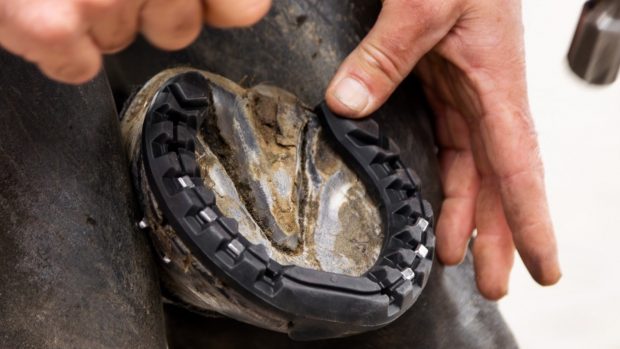At some point, most horses will dislodge or twist a shoe that will require immediate removal. Inevitably, this will be at a time no farrier or vet is available. To avoid a lot of stress, and the potential for quite serious damage, it is worth ensuring that you are equipped with a few basic tools.
“Every yard should have a pair of pincers, a hammer and a buffer or clench cutter for use in an emergency,” says farrier Richard Chard.
“People do improvise with all sorts of household tools, but it’s easy to cause considerable damage to the hoof if the procedure isn’t carried out correctly. Pincers and a buffer can be bought quite cheaply through a number equestrian outlets or catalogues.”
Richard does caution that removing a shoe is not a task that should be undertaken lightly as once the process is started it must be completed.
“Recognising when to remove the shoe is the basic first step,” he says. “If it’s hanging off, twisted to one side or has nails bent underneath and digging into the sole, it’s likely that removal cannot safely be delayed.”
Once the decision is made, try to muster some help. After you’ve begun to straighten the nails, the hoof cannot be put down until the shoe has been removed. If no extra pair of hands is forthcoming and your horse is suitably quiet, it may be worth using a sturdy upturned container or mounting block to take the weight. Otherwise, put on full chaps to help protect your legs as you grip the foot between them.
“Study the foot carefully to identify which nails are in place and how well fixed they are,” says Richard. “Then angle the buffer towards the hoof wall under the first clench [hook of the nail] and hit it smartly with the hammer either to lift and straighten the hook or cut it off. Repeat this with each nail until they are all straight – leaving even a slight hook will make it much more difficult to remove the shoe and possibly damage the hoof.
“When all the nails are straight, use the pincers to grasp the shoe firmly and, starting from the heel working towards the toe, begin to lever the shoe off, a little at a time from each side.”
Farrier Gary Turnwell agrees that every yard and lorry should carry a set of tools. He also suggests that all horse owners ask their farrier to show them exactly how to remove a shoe.
“If they learn on their own horse it will be so much easier should an emergency arise,” he points out. “Care should be taken when using the pincers to work the shoe off gradually. Don’t pivot the pincers against the sole of the foot for extra leverage, and don’t try to remove the shoe before either straightening or cutting off the clenches.”




